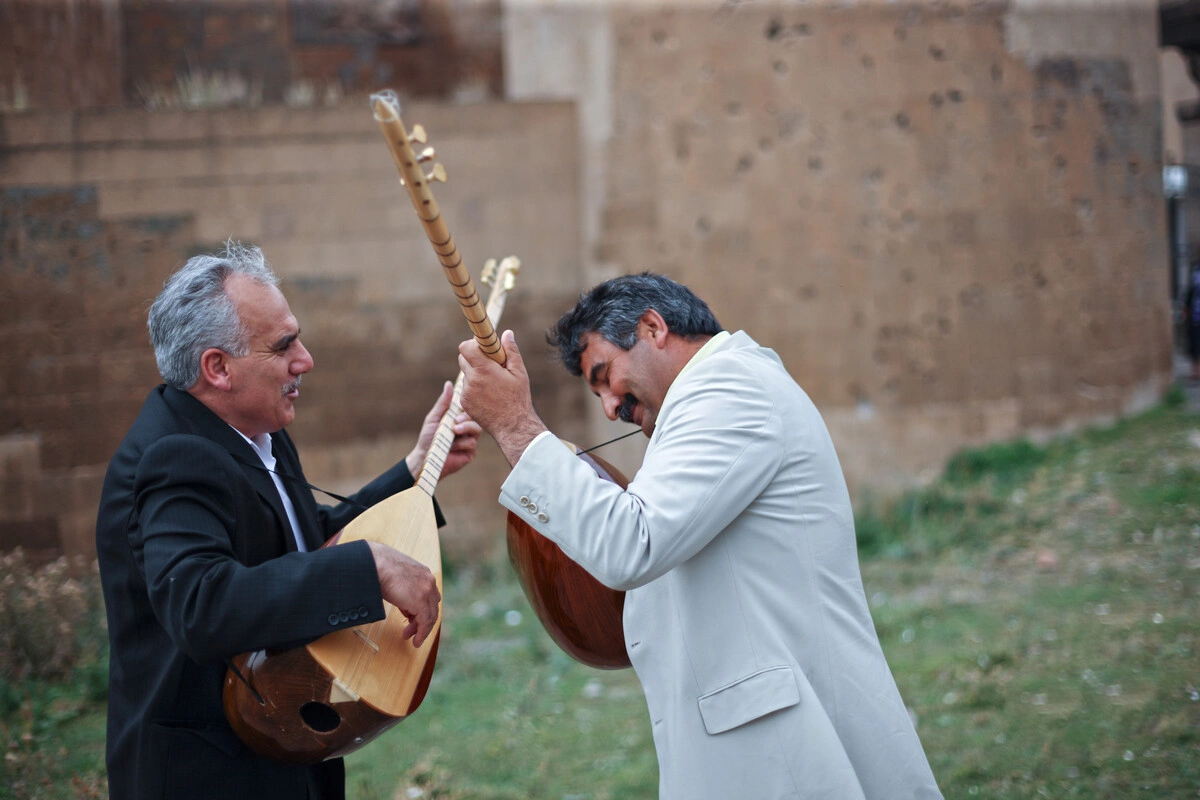
Rediscovering the folk song whose melody bridges cultures in a divided region.
The Saz (or Baglama in Turkish) is a resonant lute instrument, known in both Azerbaijan and Armenia by the same name. Image: Dreamer Company/Shutterstock
On a cold bright day on Toronto’s Yonge-Dundas Square, a grey-haired gent opens a violin-style case and pulls out a tar (figure-of-eight shaped lute). He starts to play to nobody in particular, barely noticed in passing by purposeful pedestrians. Then a flautist arrives. And a guitarist, to make a trio. A few shoppers have now stopped to watch the event, which is clearly being filmed. Are they famous? Where do they come from? A scarf-wearing woman stands emotionless, all in black. A heavy-set man approaches purposefully wearing shades, a thick black moustache and military pants. He’s carrying a heavy black box that looks set to cause a bomb scare. But inside the box is a piano accordion, and his female accomplice turns from menacing statue to gently whirling dancer as the ensemble is completed.
Yes, it’s one of those heart-string-pulling






But it’s not just in Azerbaijan that the song is beloved. Daghestani singer Misty, generally seen as a Russian Deep House diva,





Play the same melody in Yerevan, and people will be delighted: there too, they will hear ‘their’ classic. The name in Armenian is Sari Aghjik (Girl of the Mountains) or occasionally Vard Sireci (I loved a rose) rather than Sarı Gelin (Blond Bride). Armenian artists have made countless variants, some very



This common heritage should be an uplifting tale of cultural sharing. The timelessly popular music could be seen as a cultural bridge between people separated by politics. But sadly, in recent years, things seem to be working the other way around. On virtually any YouTube clip of the song, comments are likely to be peppered with invective claiming the melody for ‘their side.’ One of Djivan Gasparian’s many haunting


This is deeply sad.
Should timeless folk music really be fixed to its language and culture of creation?
Should French music fans hate Frank Sinatra’s My Way because it was ‘stolen’ from Claude François Comme d’Habitude? Or should it be Egyptian? After all, Cloclo was born in Ismailia!
Of course not. The idea is ridiculous. And even more so for a song like Sari Gelin/Aghjik, so old that it dates back way before the national borders of the people who are fighting for its ‘ownership.’ Could the song be Azerbaijani and Armenian and Turkish and more? All and none?
Let us dream of a time when the song becomes a platform for showing what is shared rather than a memorial for what has been destroyed. Music can transcend borders and celebrate the joyous shared culture of the region’s different peoples. Perhaps this is already starting to happen. On Arif Sağ’s Turkish



Well said.
Share on social media